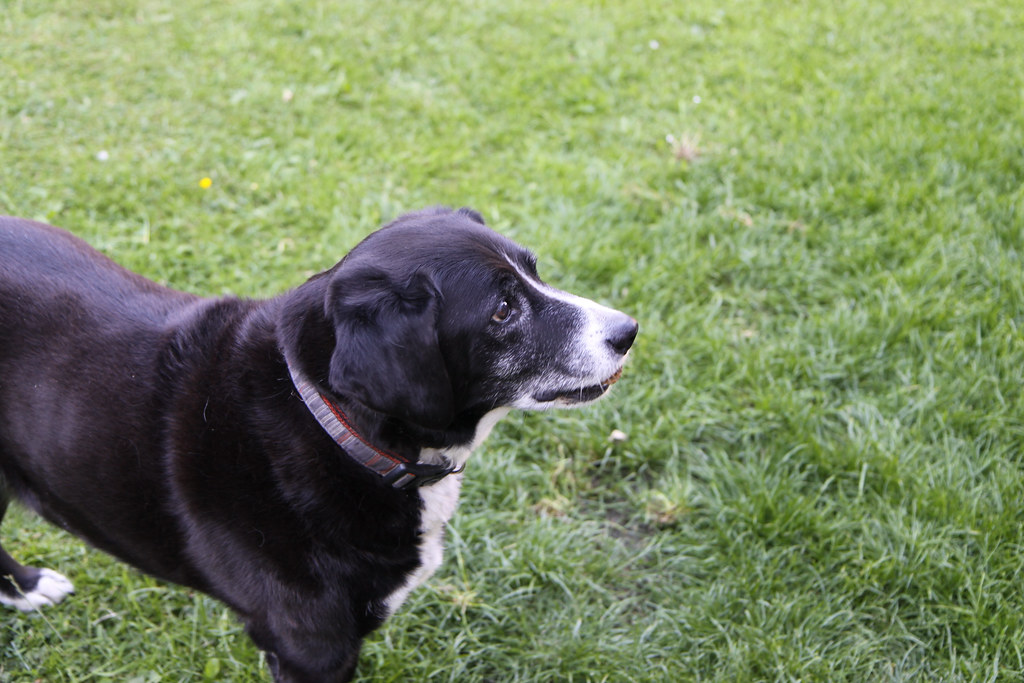Are you thinking of adding a furry friend to your family? Adopting a rescue dog is a compassionate and rewarding choice. Rescue dogs bring unconditional love and joy to a home, but there are important factors to consider before committing. From understanding the adoption process to preparing your home, being well-informed is crucial.
Adoption not only gives a dog a second chance but also frees up resources for rescue organizations to help more animals in need. It’s a win-win for both the pet and the community. However, to ensure a smooth transition for both you and your new canine companion, you’ll need to do some planning and preparation.
“Adopting a rescue dog is a long-term commitment that can change your life for the better. Make sure you’re ready for the responsibilities and the joys it brings,” advises Linda Watts, a certified dog behaviorist.
Here are some key points to keep in mind when adopting a rescue dog:
- Research: Learn about different breeds and their temperaments to find the best match for your lifestyle.
- Home Preparation: Make sure your home is safe and welcoming for a new pet. This might include setting up a comfortable sleeping area, removing hazards, and having the necessary supplies like food, water bowls, and toys.
- Financial Readiness: Consider the costs associated with pet ownership, including food, grooming, veterinary care, and potential training classes.
- Time Commitment: Dogs require significant time and attention. Ensure you have enough time to provide regular exercise, socialization, and bonding opportunities.
Adopting a rescue dog is an act of love and dedication. By taking the time to prepare, you can create a happy, healthy environment for your new family member and enjoy the many benefits of pet ownership.
What are the key benefits of adopting a rescue dog?
One of the key benefits of adopting a rescue dog is the opportunity to save a life. Many rescue dogs come from shelters where they face the risk of euthanasia due to overcrowding. By adopting, you provide a second chance for a dog to live a happy and fulfilling life. Adopting a rescue dog often means gaining a loyal and grateful companion. Rescue dogs tend to form strong bonds with their new owners, showing immense loyalty and affection as a result of being given a new lease on life.
Another benefit is the variety of dogs available for adoption. Shelters and rescue organizations have dogs of all ages, breeds, and temperaments, allowing you to find a pet that perfectly matches your lifestyle and preferences. Adopting a rescue dog can also be more cost-effective compared to purchasing a dog from a breeder or pet store. Adoption fees typically cover essential veterinary care, such as vaccinations, spaying or neutering, and microchipping, which can save you significant upfront costs.
Beyond the initial cost savings, adopting a rescue dog supports a noble cause. Your adoption fee directly contributes to the well-being of the animals in the shelter, helping provide food, medical care, and other essential needs for those still awaiting their forever homes.
Moreover, by adopting, you’re taking a stand against unethical breeding practices. Each dog adopted from a shelter or rescue means one less customer for puppy mills and backyard breeders, which are often associated with substandard care and poor living conditions for the animals.
Adopting a dog from a shelter also promotes a healthier pet population. Shelters often ensure that their animals are healthy and well-socialized, reducing the risks of adopting a pet with hidden medical or behavioral issues. This can lead to a more harmonious integration of the new dog into your household.
How can you prepare your home for a new rescue dog?
Creating a safe and welcoming space for your new rescue dog is crucial. Start by designating a specific area in your home where the dog can feel secure and comfortable. This could be a quiet corner with a cozy bed, away from high-traffic areas and loud noises. Providing a designated space helps the dog acclimate and reduces anxiety during the initial transition period. Ensure that your home is dog-proofed to prevent any accidents or injuries. This involves removing or securing items that could be hazardous, such as electrical cords, toxic plants, and small objects that could be swallowed. Additionally, make sure that trash cans are covered and that cleaning supplies and medications are stored out of reach.
Stock up on essential supplies before bringing your rescue dog home. These include food and water bowls, high-quality dog food, a leash and collar, identification tags, grooming tools, and toys. Having these items ready will help your dog settle in more quickly and make the transition smoother. Establish a consistent routine from day one. Dogs thrive on routine, and having a set schedule for feeding, walks, playtime, and bathroom breaks will help your rescue dog feel more secure. Consistency in daily activities can also aid in training and behavior management.
Consider setting up a designated space for your new furry friend. This can be a quiet corner or a cozy crate where your dog can retreat to feel safe and relaxed. Ensuring your dog has its own space can reduce anxiety and provide a sense of security during the adjustment period. Additionally, make sure to puppy-proof your home by securing any hazardous items and removing anything that could be a potential choking hazard.
Start with a visit to the veterinarian as soon as you bring your rescue dog home. A thorough check-up will address any immediate health concerns and establish a vaccination and wellness plan. Your vet can also provide valuable advice on nutrition, grooming, and overall care tailored to your dog’s specific needs.
Spend quality time bonding with your dog. Engage in activities that promote trust and comfort, such as gentle petting, interactive play, and reward-based training. Remember, patience is key. Some rescue dogs may have experienced trauma or neglect, and it can take time for them to fully trust and open up. Positive reinforcement and a calm, loving approach will go a long way in building a strong, lasting relationship.
Finally, connect with your local animal shelter or rescue organization for additional support and resources. Shelter employees and volunteers are often knowledgeable and can offer guidance on behavior issues, and training tips, and even recommend reputable trainers or behaviorists if needed. Leveraging this support network can significantly ease the transition and help you provide the best possible home for your rescue dog.
What are common behavioral issues in rescue dogs and how to address them?
Rescue dogs often come with a history of trauma, neglect, or inconsistent care, which can manifest in various behavioral issues. One common issue is anxiety, which may present as excessive barking, destructive behavior, or clinginess. To address anxiety, create a stable and predictable environment for your dog. Use positive reinforcement to reward calm behavior and consider crate training as a safe space for your dog to retreat to when feeling overwhelmed.
Another prevalent behavioral issue is fearfulness, which can be directed towards people, other animals, or certain environments. Gradual desensitization and counter-conditioning techniques can help. Introduce your dog to new experiences slowly and pair them with positive outcomes, like treats or affection, to build confidence and reduce fear.
Aggression can also be a concern, whether it’s directed towards humans or other animals. This behavior often stems from fear, territoriality, or past experiences of abuse. Professional guidance from a certified dog trainer or behaviorist is crucial in these cases. They can help you understand the root cause of the aggression and develop a tailored behavior modification plan.
House training issues are common in rescue dogs, especially those who have never lived in a home environment. Consistency is key. Establish a regular feeding and potty schedule, and take your dog outside frequently, especially after meals, naps, and play sessions. Reward your dog for eliminating outside to reinforce the desired behavior.
Resource guarding, where a dog becomes possessive over food, toys, or other objects, is another issue that may arise. To address this, practice trading games where you offer something of higher value in exchange for the guarded item. Over time, this can help your dog learn that giving up resources leads to positive outcomes. Separation anxiety is another challenge, where the dog becomes extremely distressed when left alone. Gradually acclimate your dog to being alone by starting with short absences and slowly increasing the duration. Providing engaging toys or puzzles can help distract and comfort your dog during your absence.
Lastly, socialization deficits are common in rescue dogs that may not have had adequate exposure to different people, animals, and environments. Enroll your dog in a well-structured socialization class and expose them to a variety of controlled, positive experiences. This will help them become more adaptable and less fearful of new situations.
What should you expect during the first few weeks with a rescue dog?
During the first few weeks with a rescue dog, you should expect an adjustment period as your new pet acclimates to their new environment. This can include a range of behaviors from shyness and anxiety to excitement and hyperactivity. Understanding that this is a normal part of the transition can help you remain patient and supportive. Your rescue dog may exhibit signs of stress, such as excessive barking, whining, or even minor destructive behaviors. These actions are often a result of the dog feeling insecure or overwhelmed by the new surroundings. Providing a calm, stable environment and establishing a consistent routine can help mitigate these stress responses.
It’s important to give your rescue dog time to decompress. They may need a quiet space where they can retreat and feel safe. This could be a cozy corner with a bed or crate where they can relax without feeling pressured to interact constantly.
Ensuring they have a designated safe space allows them to adapt to their new environment at their own pace. Monitor their behavior closely during this time and look for signs of stress or relaxation. You might notice them hiding at first; don’t worry, this is perfectly normal.
Gradually introduce them to different areas of the house and family members. Let interactions happen naturally rather than forcing them. Provide plenty of positive reinforcement when they show calm or inquisitive behavior. Treats, gentle petting, and soothing words can work wonders in building trust.
While it’s essential to give them space, maintaining a consistent routine is equally important. Regular meal times, walks, and play sessions can help a new rescue dog feel more secure. The familiarity of a routine offers them a sense of stability and helps in reducing anxiety.
Be patient. Trust grows slowly, but with compassion, understanding, and consistent care, you’ll soon have a loyal, loving companion who feels right at home.
How can you help a rescue dog adjust to a new environment?
Creating a safe and comfortable space for your rescue dog is crucial. Designate a quiet area in your home where the dog can retreat and feel secure. This space should include a cozy bed, some toys, and access to water. Allow the dog to explore this area at their own pace without forcing interaction. Establishing a consistent routine can help your rescue dog feel more secure and understand what to expect. Feed them at the same times each day, take them for walks on a regular schedule, and maintain consistent times for play and rest. This predictability can reduce anxiety and help the dog settle in more quickly.
Patience and positive reinforcement are key when helping a rescue dog adjust. Use treats, praise, and gentle encouragement to reward desired behaviors. Avoid punishment, as it can increase fear and anxiety. Instead, focus on building trust and reinforcing positive actions. Socialization is important, but it should be done gradually. Introduce your rescue dog to new people, pets, and environments slowly and in a controlled manner. Monitor their reactions and provide positive experiences to help them build confidence and reduce fear.
Consider seeking professional help if needed. A veterinarian, dog trainer, or animal behaviorist can provide valuable guidance and support. They can help address any specific behavioral issues and offer strategies tailored to your dog’s unique needs. Exercise and mental stimulation are essential for a rescue dog’s well-being. Regular walks, playtime, and interactive toys can help burn off excess energy and reduce stress. Mental challenges, such as puzzle toys or basic training exercises, can also keep their mind engaged and prevent boredom.
Building a bond with your rescue dog takes time. Spend quality time together through activities like grooming, playing, and training. This helps to establish trust and strengthens your relationship. Be patient and allow the bond to develop naturally.
Remember, adopting a rescue dog is a journey filled with rewards and learning experiences. It’s a commitment that will bring joy, companionship, and countless memories. With patience, dedication, and love, you’ll not only provide a forever home for your new friend but also create a bond that lasts a lifetime.



